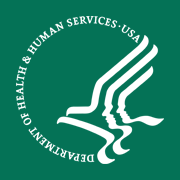Medicare Spending Increases Slightly under Affordable Care Act
HHS found that Medicare spending in 2014 increased by 2.4 percent because of the Affordable Care Act and the use of new specialty prescription drugs.

- In 2014, Medicare spending for personal healthcare expenditures only increased by 2.4 percent per person and decreased by 3.6 percent for Medicaid, a recent report by the Department of Health and Human Services (HHS) stated.

In comparison, overall national healthcare spending increased by a moderate 4.3 percent per person.
HHS found that the significant gains in health insurance coverage under the Affordable Care Act (ACA) and the development of specialty drugs caused a temporary increase in federal and private healthcare spending.
“The ACA’s coverage expansions were posited to increase national health care expenditures as previously uninsured Americans gained access to quality health coverage,” the report explains.
“The coverage expansions did drive up spending growth moderately. However, current trends suggest that the increase in spending growth from these changes may well be transitory.”
Healthcare expenditures increased because individuals who were under- or uninsured before ACA were able to obtain quality healthcare insurance coverage and greater access to care. HHS reports that the slight increase in spending will moderate over time as the initial demand for health insurance under ACA subsides.
Federal programs, such as Medicare and Medicaid, benefitted from the period of slight growth, HHS reports.
From 2009 to 2014, Medicare spent $473.1 billion less on personal healthcare expenditures compared to what it would have spent under the 2000 to 2008 average growth rate.
“Using data from the Treasury Department on Medicare benefit outlays in 2015, we estimate that per enrollee spending growth will continue to be low at around 1 percent, leading to a cumulative reduction in spending of approximately $648.6 billion between 2009 and 2015,” HHS reports.
“To put this in context, this reduction in spending represents an amount that is greater than total Medicare spending on personal health expenditures in 2015.”
In addition, HHS found that hospital outpatient and ambulatory service growth was higher than inpatient spending growth.
The growth trends reflect the shift to outpatient settings for care and the transition to value-based payment policies, such as the Hospital Readmissions Reduction program.
Private insurance spending per personal also increased by 2.9 percent in 2014.
HHS stated that this growth rate is also transitory because ACA reforms granted more access to quality care for individuals with private insurance plans.
“Notably, the 2014 coverage year was the first year in which the Affordable Care Act’s most important reforms to the individual (and small group) markets were in place,” the report stated. “These reforms increased the comprehensiveness of benefit packages available to consumers and eliminated barriers to coverage, such as pre-existing condition exclusions.”
Another factor in growth rate increases was the introduction of specialty drugs in 2014, such as Hepatitis C and anti-cholesterol prescription drugs.
“The prescription drug spending growth rate for traditional Medicare would have remained the same in 2014 and 2013 in the absence of new Hepatitis C drugs, but instead increased by 4.5 percentage points,” HHS wrote.
In 2014, prescription drug spending was 56 percent of Medicare spending growth per enrollee. For private insurance, it accounted for 47 percent of spending growth per person.
However, while prescription drug spending was high in 2014 for both federal and private insurance programs, the increase represented only 2 percent of total spending per person.
Due to decreases in spending in other categories, overall spending on prescriptions was moderate for the time period.
HHS reports that 2014 growth rates are transitory as ACA implementation and new treatments stabilize. ACA could potentially reduce Medicare spending as the transition period ends.
Recently, the Centers for Medicare and Medicaid Services (CMS) announced that ACA has reduced healthcare spending for Medicare beneficiaries. In the past six years, beneficiaries have saved an estimated $20 billion in prescription drug spending under the ACA, CMS states.
